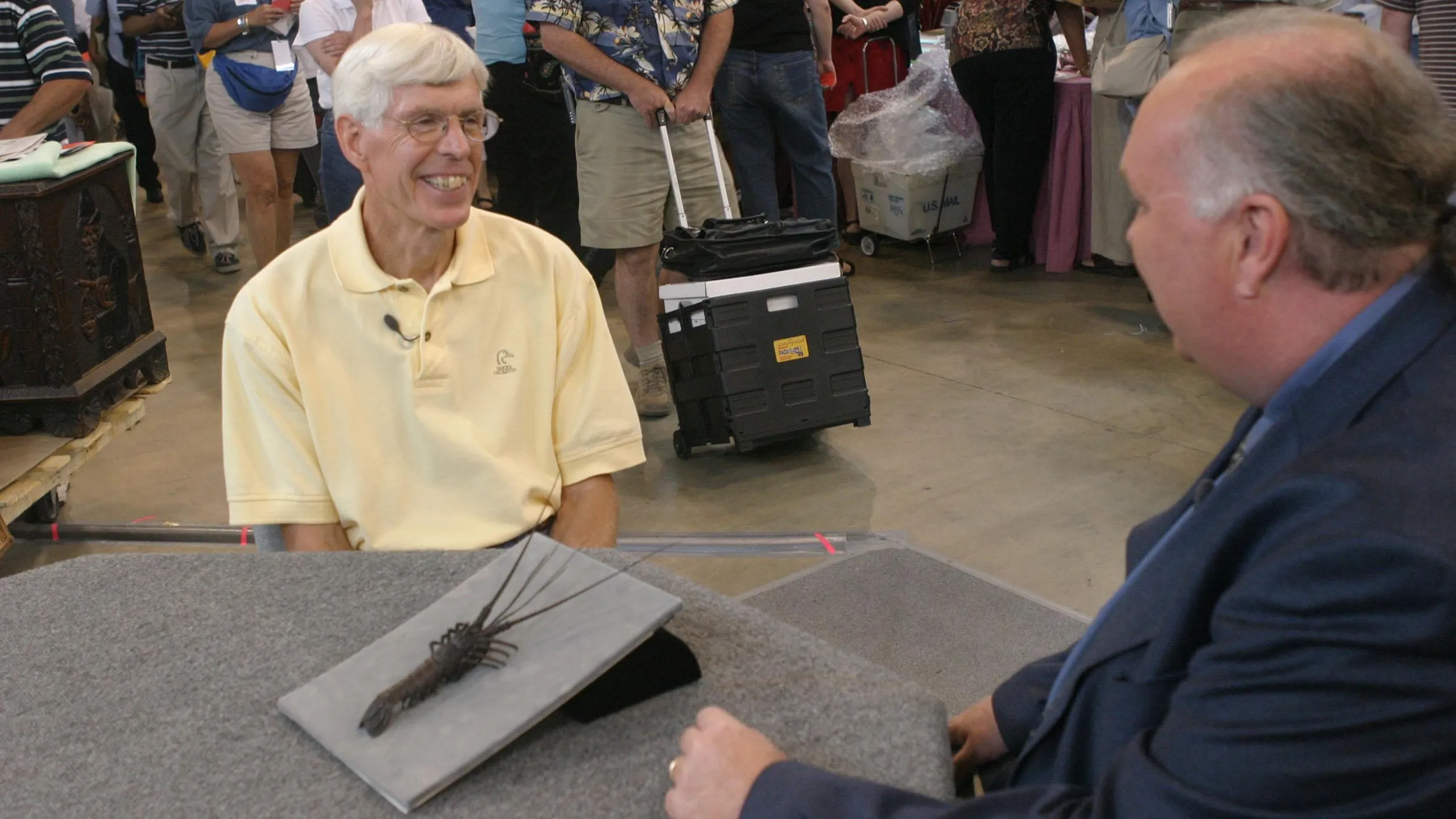GUEST: These were my wife's dad's masks. And he worked with the forest rangers on the West Coast of British Columbia. And I presume they were given to him by the Indians who he worked with.
APPRAISER: By the Indians. Do you know exactly where he worked out there on the West Coast?
GUEST: Just that it was on the coast and above Vancouver.
APPRAISER: Yeah, well, these are made on the north end of Vancouver Island.
GUEST: Okay.
APPRAISER: In a place, what's now known as Alert Bay, or Fort Rupert. And they're made by a group of natives who used to be known as the Kwakiutl or the Kwakiuth. Names are changing now to more appropriate names, and their appropriate name is the Kwakwaka'wakw, and those are the speakers of Kwakwala. We have two different kinds of masks here. The bottom three are known as frontlets. And they were used by chiefs in social ceremonies at things like potlatches to honor a marriage or a change in rank. And each one of these has a series of holes. This one, three. And affixed to this would've been a device like a hat, and it would've sat on the top of the head, the hat part, so that the mask sat on your forehead, hence the terminology, a frontlet. And it shows inlays of abalone shell, which was a very prized shell on the West Coast of North America, and something we call poor man's abalone, which is mirror.
GUEST: Yes.
APPRAISER: It was cheaper to get old broken bits of mirror than to use the highly prized abalone shell. These were used only by chiefs. The mask above was used in something called a winter ceremonial, which was a form of theater. It was only done during the wintertime. It was used to enact mythical events of the past, done at night, and a dancer would've either had this strapped to his head or held it from behind as he told a story. In collecting Native American art, there are some questions of legality in owning some of these things. And that primarily has to do with, as it stands on the Northwest Coast, whether objects were owned singularly by an individual or collectively by a group. These particular masks you have here were all owned singularly. All of these would've been individual chiefs. This would've been used by a dancer. So there's no problems in the commercial market today about ownership of these-- they're perfectly legal. Three of these masks represent a thunderbird, one of the masks is a beaver, and we can tell that by these big buck beaver teeth here. Age-wise, late 19th, early 20th century, except for this. This is definitely a 19th century. Any sense at all of the value?
GUEST: Oh, no, I have no idea.
APPRAISER: None at all?
GUEST: No idea.
APPRAISER: Well, the frontlets-- this one, the beaver, is probably 1910, you're looking in the neighborhood of $6,000 to $8,000. The thunderbird mask closest to you, slightly older. I suspect these two masks were made by the same artist. That's in the neighborhood of $8,000 to $10,000. The lovely, round, moon-type mask with the thunderbird-- $10,000, $12,000, $14,000. And again, another thunderbird. I suspect these all came from the same family. We're looking in the neighborhood of $20,000 to $25,000 on the large thunderbird.
GUEST: That is hard to believe, really.
APPRAISER: Very desirable, large market for these. There's a reason why it's taken seven years to find masks like this coming to the ROADSHOW. They're not that common.
GUEST: Yes.











